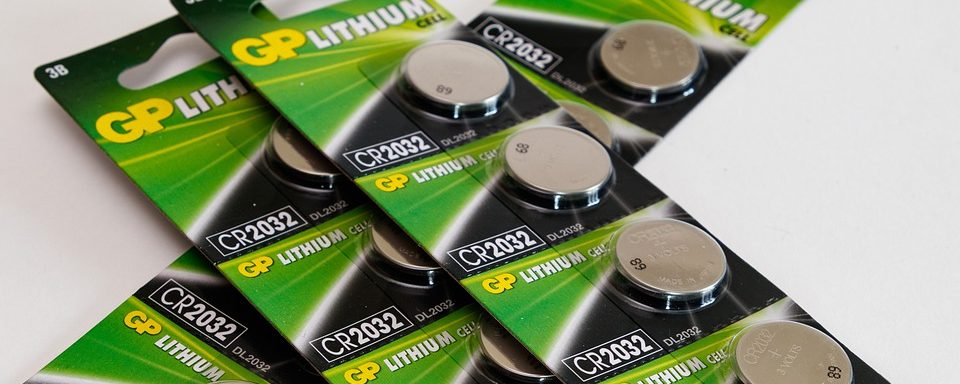By Daniel Cui
Imagine Tesla car company’s incredible renewable and sustainable energy capabilities jammed into a battery that’s smaller than the width of a single strand of your hair. This is exactly what the Liang Li and other researchers at the Beijing National Laboratory for Molecular Sciences have been trying to achieve, albeit in a rather unique way by interfacing organic materials with two-dimensional meshes of carbon atoms.
As energy and natural resource consumption have exponentially skyrocketed in the recent decades due to drastic increases in technology and human population, waste and pollution have accumulated as well due to malpractice and ineffective methods of waste processing. Consequently, scientists and engineers have increasingly relied on innovations in green energy generation to reduce waste. One such innovation has been in lithium ion batteries. Relying on lithium’s excellent energy efficiency and storage capabilities, these batteries have made their way into our daily lives through electric cars, phones, and other electronic devices. However, despite lithium ion batteries’ nearly unparalleled energy applications, the cathodes, or pieces of metal in a battery from which electrical current exits, are often not environmentally friendly. Typically, they are made from lithium metal which can be hard to recycle. When discarded in nature, they can also be toxic.

Nevertheless, Li’s research team has made a battery using man-made organic materials which have been synthesized in the lab using carbon, oxygen, nitrogen, and hydrogen atoms. Specifically, its electrical properties have been enhanced through the use of a 2D material mesh, which is paper-thin. Though one may think that organic materials, like those found in nature, may not be the best electrical conductors, the scientists have noted that organic cathodes are, in fact, relatively effective conductors when paired with this mesh and have the added qualities of being efficiently disposable and easily processed. These materials have high energy capacities and a multitude of desirable qualities due to the immense complexity and variations present in organic molecules. In this study, scientists utilized two organic molecules, perylenetetracarboxylic dianhydride (PTCDA), and sodium rhodizonate dibasic (SR) as the electrically conductive parts of the battery.
Two major shortcomings the research group has noted are that organic materials themselves have low intrinsic conductivity, or conductivity as measured in a pure material without impurities, and normally dissolve in their environment, which destroys any long range ordering of the molecules that would have given rise to their electrical properties. Past efforts have attempted to address these shortcomings using improved synthesis techniques and carbon-coating technology; however, both methods have progressed slowly without immense improvement.
Graphdiyne, another material that was studied, was used to coat the organic cathodes. Graphdiyne’s strength and conductive power in its one-atom-thick mesh of carbon atoms allowed scientists to construct an electrically enhanced organic battery that addressed the shortcomings of organic materials. After applying theoretical binding energy calculations, electron microscopy, and electrochemical tests, the research team confirmed graphdiyne’s ability to conformally bind and shield the organic molecules. They found that the 2D mesh was strong enough to hold the organic molecules together, preventing their dissolution. Researchers were also able to improve electrical conductivity as 93% of the organic molecule’s mass was rendered electrochemically active. This percentage of active mass, as noted by the scientists, was comparable to that of lithium-ion batteries. This improvement in the conductivity of organic materials through the use of a minimal amount of non-degradable material has implications for the future of sustainable battery technology.
Currently, lithium-ion and lead-acid batteries dominate a little over 50% of the global battery market. With the implementation of the Li research group’s innovations in organic batteries, not only could the same levels of energy efficiency and storage be retained as compared with the market leaders, but also this development could substantially decrease the volumetric waste of potentially toxic metals in our environment. Perhaps, in the near future, our electronics will be powered by nature itself for a brighter and simultaneously greener generation of new technologies.
To learn more about how two-dimensional materials like graphdiyne are addressing challenges in sustainable energy, take a look at this article from Frontiers in Chemistry.
Works Cited
Battery University, “BU-103: Global Battery Markets.” Accessed on: April 20, 2020. [Online]. Available: https://batteryuniversity.com/learn/article/global_battery_markets.’
Li, L., Zuo, Z., Wang, F., Gao, J., Cao, A., He, F., Li, Y., In Situ Coating Graphdiyne for High‐Energy‐Density and Stable Organic Cathodes. Adv. Mater. 2020, 32, 2000140. https://doi.org/10.1002/adma.202000140.
Recycling Batteries and the Toxic Hazards of Battery Disposal. 2008, November 6. AZoCleantech. https://www.azocleantech.com/article.aspx?ArticleID=132
